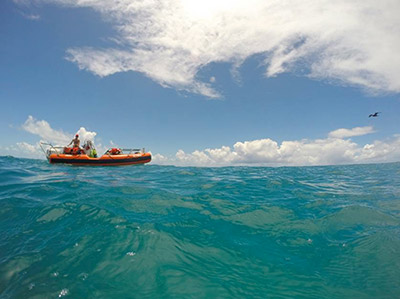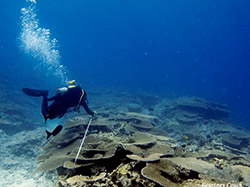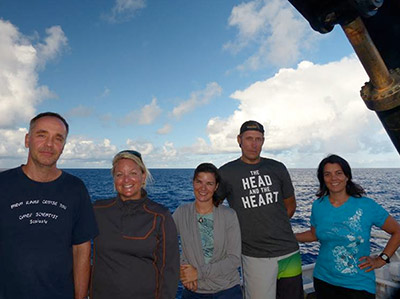RAMP | August 15, 2014: First Stop: French Frigate Shoals
After a three-day transit, the team arrived at French Frigate Shoals (FFS), the midpoint of the Hawaiian archipelago and the largest coral reef area in Hawai‘i. An atoll shaped like a crescent 18-miles long, FFS has the highest coral diversity in the NWHI. It is dotted with low sand islets which are small and shift position - even disappear and reappear - over the years.
These islets provide habitat for the world’s largest breeding colony of Hawaiian monk seal, which is listed as critically endangered by the World Conservation Union, and also provide nesting sites for nearly 100 percent of the green turtles in the entire Hawaiian Archipelago. This means that if you see a Hawaiian green sea turtle in Kona, it likely hatched at FFS.
The islets are surrounded by 230,000 acres (931 square kilometers) of coral reef habitat that is home to 178 species of reef fishes and more than 41 species of corals, including the genus Acropora, which is uncommon in the main Hawaiian Islands. A relatively deep (82 to 98 feet) coral reef here was found to function as a spawning site for ulua, or giant trevally, a rare discovery of spawning sites for top predators.
The scientific party split up into different groups and set out to different parts of the atoll to perform their research.
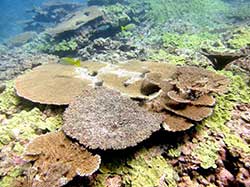
A stunning display of table coral (Acropora) at French Frigate Shoals. These types of coral are not commonly found in the main Hawaiian Islands. Credit: Nikki Gutlay/UH-Mānoa
The RAMP team conducted multiple dives along different portions of the atoll, monitoring reef fish and corals.
The University of Hawaiʻi team conducted several dives, collecting coral rubble samples to be analyzed back in the lab for the bioerosion project, monitoring for coral disease, and surveying for cryptofauna – the small critters that hide in corals – in cauliflower corals.
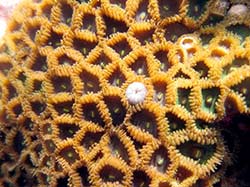
A colony of zoanthids (Zoanthus spp.), which are anemone-like polyps. Unlike true corals, they have no hard skeleton. French Frigate Shoals. Credit: Nikki Gutlay/UH-Mānoa
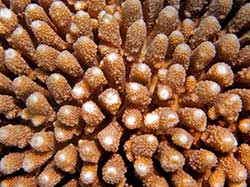
Close up of a finger staghorn coral (Acropora humilis), one of the less common Acropora corals found in the NWHI, at French Frigate Shoals. Credit: Stephen Matadobra/UH-Mānoa
The maritime heritage team visited the wreck site of the Two Brothers, a nineteenth century Nantucket Whaleship that struck a reef near a small spit of sand called Shark Island. The archaeologists wanted to see if any artifacts resting in shallow water had shifted from the recent storm activity in the area. The team also visited a sunken barge and tow-boarded the flats to survey for other potential wreck sites.
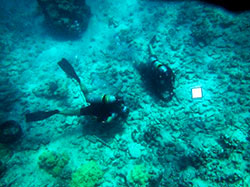
Kelly Gleason and Jason Raupp examine the remains of the Two Brothers at French Frigate Shoals. Credit: Toni Parras/NOAA
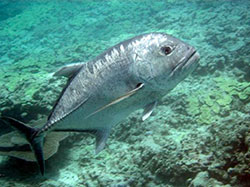
An ulua aukea, or giant trevally (Caranx ignobilis) cruises the reef at French Frigate Shoals. Credit: Stephen Matadobra/UH-Mānoa
On August 13, members of the expedition spoke live via satellite phone with host Carlie Wiener on Hawaii’s Tomorrow Talk Radio Show on AM 760 to talk about the work they are conducting in the NWHI. The recorded program can be accessed online at www.cosee-ie.net/programs/allthingsmarineradioshow.
Return to RAMP Expedition Log.
